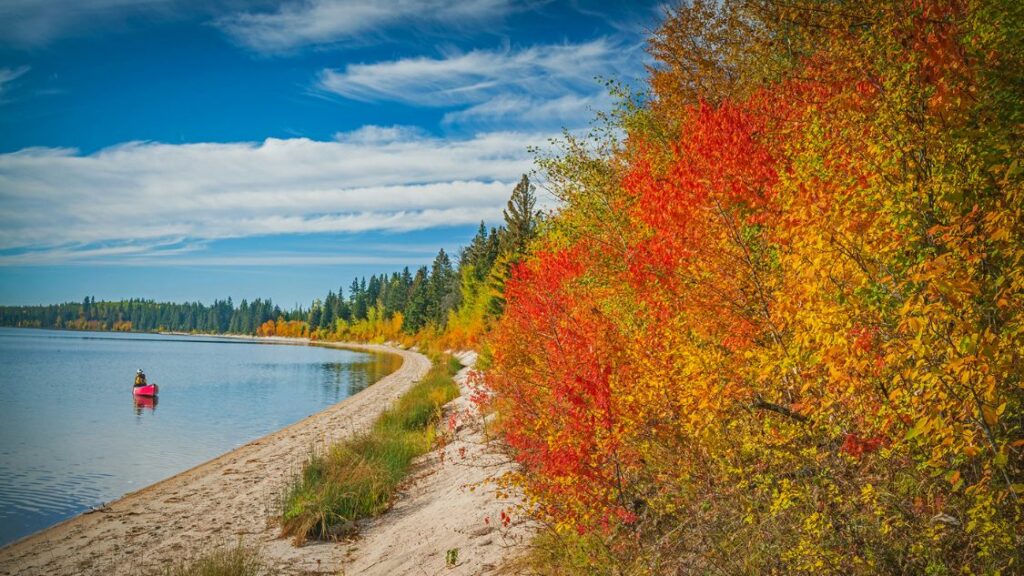Prince Albert National Park, Saskatchewan: A Wilderness Sanctuary in the Heart of the Prairies

Nestled in the boreal forest of central Saskatchewan, Prince Albert National Park stands as a testament to the beauty and diversity of Canada’s natural landscapes. Spanning over 3,800 square kilometers, this pristine wilderness sanctuary is a haven for outdoor enthusiasts, wildlife enthusiasts, and nature lovers alike. From its ancient forests and sparkling lakes to its rolling plains and abundant wildlife, Prince Albert National Park offers a wealth of experiences that celebrate the splendor of the Canadian wilderness.
A Natural Wonderland
At the heart of Prince Albert National Park lies the boreal forest, a vast and ancient ecosystem that stretches across northern Canada. Here, towering spruce, pine, and fir trees dominate the landscape, providing habitat for a diverse array of wildlife, including moose, black bears, timber wolves, and elusive woodland caribou.
Visitors to the park can explore a network of hiking trails that wind through the forest, offering opportunities to observe wildlife, discover hidden waterfalls, and immerse oneself in the tranquility of nature. The park’s pristine lakes and rivers are perfect for canoeing, kayaking, and fishing, while its campgrounds provide a rustic retreat for those seeking to reconnect with the great outdoors.
Waskesiu Lake
One of the park’s most iconic features is Waskesiu Lake, a sparkling gem nestled amidst the boreal forest. This picturesque lake offers a host of recreational activities, including swimming, boating, and water skiing, as well as opportunities for picnicking and beachcombing along its sandy shores.
The town of Waskesiu, situated on the shores of the lake, serves as the gateway to the park and offers a range of amenities for visitors, including accommodations, restaurants, and shops. The Waskesiu Marina provides boat rentals and guided tours, allowing visitors to explore the lake and its surrounding wilderness with ease.
Cultural Heritage
Prince Albert National Park is also rich in cultural heritage, with a history that dates back thousands of years. The park is home to archaeological sites and artifacts that bear witness to the presence of Indigenous peoples who have inhabited the region for millennia.
Visitors can learn about the park’s Indigenous heritage through interpretive exhibits, guided tours, and cultural demonstrations offered by local Indigenous communities. From traditional storytelling and drum circles to powwows and craft workshops, there are countless opportunities to connect with the rich cultural traditions of the region’s First Nations.
Conservation and Stewardship
As a designated national park, Prince Albert is committed to the conservation and protection of its natural and cultural heritage. Conservation initiatives focus on preserving the park’s biodiversity, restoring degraded habitats, and promoting sustainable use of natural resources.
Visitor education programs, interpretive exhibits, and guided tours aim to raise awareness about the importance of environmental stewardship and responsible outdoor recreation. By fostering a culture of conservation and respect for nature, Prince Albert National Park ensures that future generations will be able to enjoy the beauty and wonder of this pristine wilderness sanctuary.
Conclusion
Prince Albert National Park, Saskatchewan, is a true wilderness paradise that celebrates the beauty and diversity of Canada’s natural landscapes. From its ancient forests and pristine lakes to its rich cultural heritage and abundant wildlife, the park offers a wealth of experiences that inspire awe and wonder in all who visit.
As stewards of this precious natural resource, it is our responsibility to protect and preserve the park for future generations to enjoy. By embracing sustainable practices, fostering environmental stewardship, and fostering a deep appreciation for the wonders of nature, we can ensure that Prince Albert National Park remains a cherished sanctuary for generations to come.




